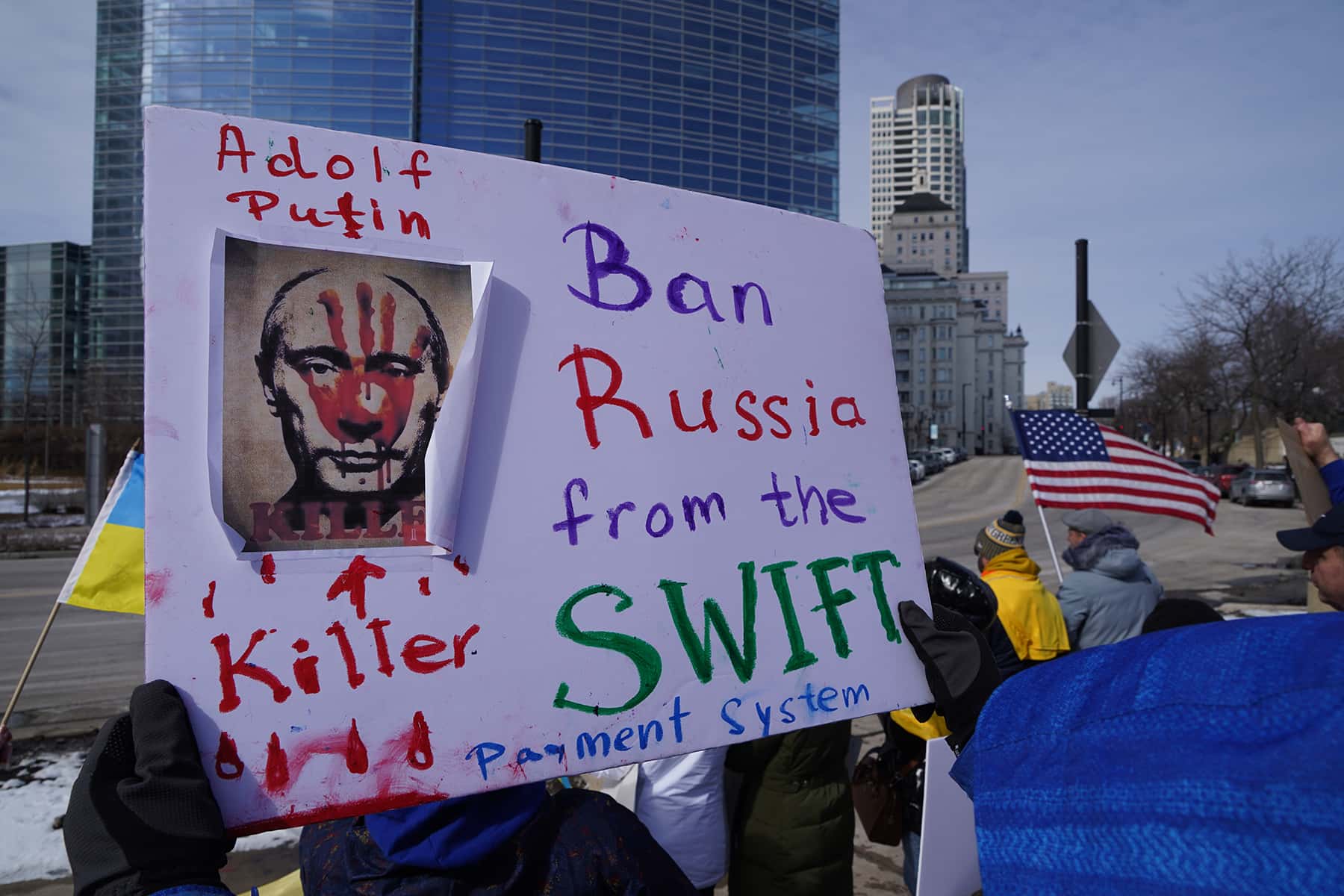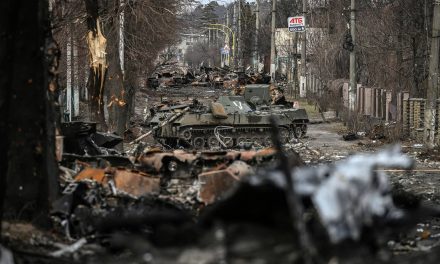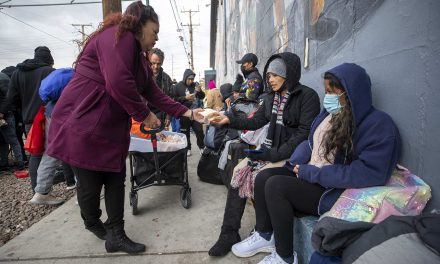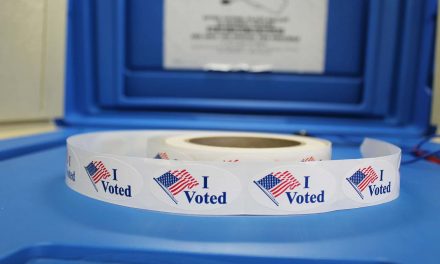
Russia appears to be on the verge of an economic collapse without parallel in its post-World War II history. The United States and European Union’s decision to sanction Russia’s central bank on February 28 has essentially severed the spinal cord of the country’s economy.
Russia is set to default on its debts, see its oil export relationships rejuggled to its detriment, its currency collapse even further, and it is now possible that most of its residents’ quality of life may fall to Iranian or potentially even Venezuelan standards in the near future.
President Vladimir Putin has long justified his strongman rule through warnings that without his guiding hand, Russia would be destined to fall back into the chaos of the 1990s when Russians experienced a drastic decline in living standards and a major contraction in the economy on the back of the Soviet Union’s collapse. Yet the reality is that his invasion of Ukraine has made possible a collapse worse than anything that Russia experienced in the 1990s.
The 1991 collapse of the Soviet economy and the birth of the new Russian economy saw huge amounts of wealth smuggled abroad, the collapse of the political-economic structure on which the Soviet Union depended and its replacement with a class of mostly violent criminals, well-connected former apparatchiks and the occasional idealistic capitalists who would come to be known as “oligarchs.” Russian life expectancies collapsed.
Yet together with Western credits, something coveted by both the last Soviet leader Mikhail Gorbachev and the first Russian Federation President Boris Yeltsin, Russia was able to begin building a capitalist market structure. The “shock therapy” applied to achieve this, however, has been widely discredited for further empowering the oligarchic class and leaving average citizens to carry the cost. It was also responsible, at least in part, for the next economic disaster that devastated Russia just seven years later, in 1998.
While Russia’s 1998 default was partially driven by the new government’s inability to effectively collect taxes from the oligarchic class, the country’s integration into global markets also played a significant role in its emergence. Indeed, Russia’s integration into global markets enabled the impact of the 1997 Asian financial and currency crisis to bleed into Russian markets. But the West eventually helped Russia negotiate its way out of the crisis, offering more credits.
This crisis was demonstrative of how quickly Russia has been integrated into the global financial system. One of the first-ever Western mega hedge funds, Long-Term Capital Management (LTCM), had to be bailed out by a consortia of banks arranged by the U.S. Federal Reserve as a result of its bets on Russia. In its default, the Central Bank of Russia also became the first national bank to default on its domestic debts rather than its external debts, even though it could print roubles. Making Russians bear the cost was seen as preferable to turning Russia into a debtor pariah.
But the 1998 crisis was not the first, or the worst, default Russians experienced in the past century. Moscow had already been in this position in 1918 when the Soviet Union defaulted on the Russian Empire’s debts. After the Bolshevik Revolution, Moscow’s stock markets shuttered, never to reopen, and the communist government repudiated all debts issued by the Tsar.
Western market players initially failed to judge the seriousness of the Bolshevik repudiation of capitalism. Russian paper initially continued to trade in London, and New York’s First National Bank, a predecessor of today’s Citibank, actually opened its first Moscow branch seven days after Lenin’s coup. But as the Bolshevik repudiation came to be understood, the Soviet Union would be cut off from U.S. and U.K. borrowing and financial markets for years to come.
The Soviet Union’s economy would be rebuilt only years later, after the economic collapse induced a civil war, and then only under Stalin’s autarky that saw millions conscripted into labour camps. Although Stalin’s Five-Year Plans were able to industrialize Russia, the human cost was brutal.
Regrettably, it looks as if Putin – who claims to have a PhD in Economics – is ready and willing to plunge Russia not only back into the chaos of the 1990s, but into an even graver situation more akin to 1918.
In response to crushing sanctions, Russia has weaponized its own debts and threatened economic war over gas, and potentially other commodities. Putin has the ability to cause significant global economic havoc, but he lacks an arsenal anywhere near comparable to the sovereign debt sanctions.
Putin is likely to fight back via an embrace of gold, cryptocurrencies and sanctions-busting. He was proactive in helping Caracas with such efforts, but they have largely been laughable – the Venezuelan-Russian “el Petro” cryptocurrency never went anywhere, and Venezuela’s oil exports remain far below historic levels. Russia is also running out of options to facilitate such actions. Switzerland, whose neutrality-induced sanctions loopholes helped facilitate such trade for other countries in the past, for example, has joined the EU’s sanctions regime against Russia.
For investors with direct exposure to Russia, losses will be deep and not recoverable for the foreseeable future. There remain creditor groups in France, Russia’s largest creditor at the time of its 1918 default, that today still argue they are owed money as a result. Investors and creditors need to be preparing for such a situation again.
Although the fact that countries such as Switzerland and Singapore have joined the latest actions demonstrate how broad outrage at Putin’s unilateral war of aggression is, there remains the potential that some third parties can mitigate the extent of the economic disaster Russia is facing. China is the only partner with the ability to truly bail out Moscow, but so far all indications are that it sees Russia’s actions as more of a threat to its attempts to undermine U.S. dollar hegemony than an opportunity.
India, which refused to condemn Russia’s invasion at the United Nations General Assembly, is also reportedly working on a rupee workaround for sanctions. It has facilitated the evasion of Russian sanctions before, with Rosneft’s purchase of Essar Oil – since renamed Nayara, but any such action in the present environment would be a far higher risk. Washington may well threaten secondary sanctions.
Yet even if India’s Modi does engage in a full sanctions-busting regime, it will not be anywhere near a sufficient panacea to save the Russian economy. China is likely to take record gains through agreements to purchase Russian gas at even cheaper prices than before, but major aid will likely be limited. Such aid would make Russia subservient to Beijing anyway, hardly the kind of new multipolar order Putin hoped the war would usher in.
Putin knew this was the risk he faced in going for an all-out war in Ukraine – President Joe Biden had signaled from the first days of his presidency that restricting Russia’s access to global financial markets and restricting its economy would form the core of the U.S.’s deterrence strategy. Putin may still have held out hope that he could divide the U.S. and Europe on their sanctions agenda, and likely did not expect that Brussels and Berlin would be so willing to go for the jugular – few did.
However, when Putin acted with wanton disregard both for the civilian population of Ukraine and began to shell its largest cities, such a sanctions response was warranted. Vladimir Putin bears sole responsibility for destroying the Russian people’s economic livelihood.
Russia now faces a choice between another 1918, 1991, or 1998-style economic crisis. Unless Putin withdraws from Ukraine or the Russian people can otherwise force change in the Kremlin’s strategy, a 1918-style collapse is the base scenario, and the 1990s options are optimistic.
Mаxіmіlіаn Hеss
Lee Matz
Originally published as What’s awaiting Russia may be much worse than the chaos of 1990s














